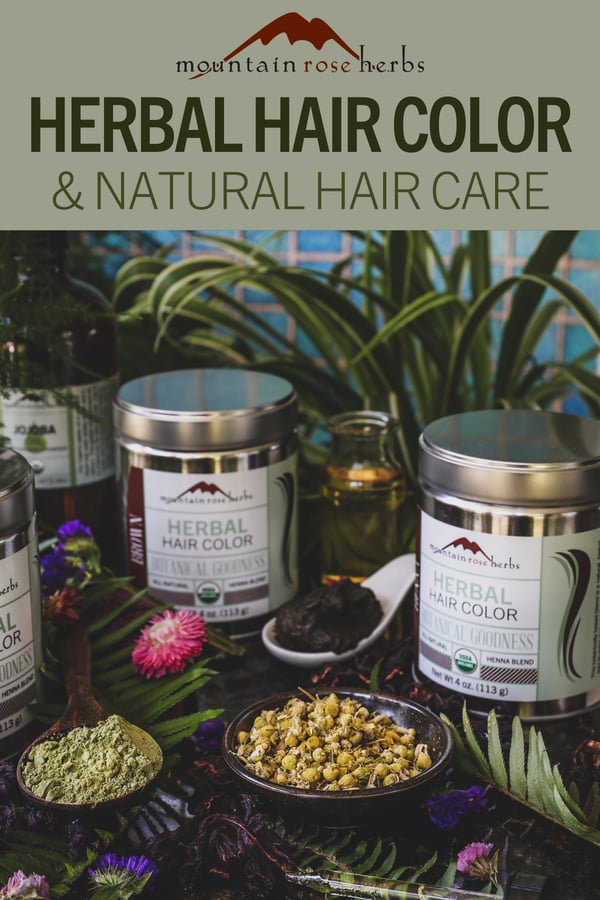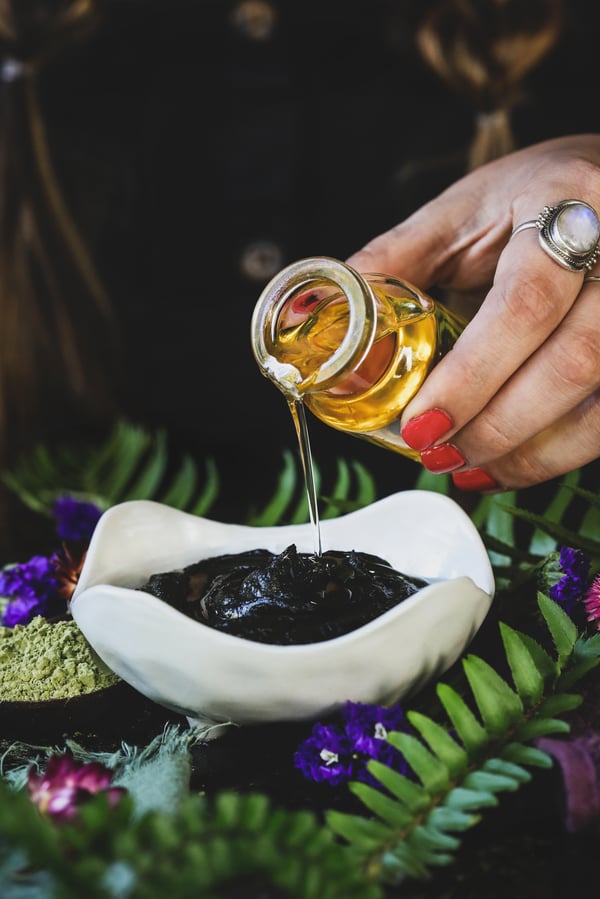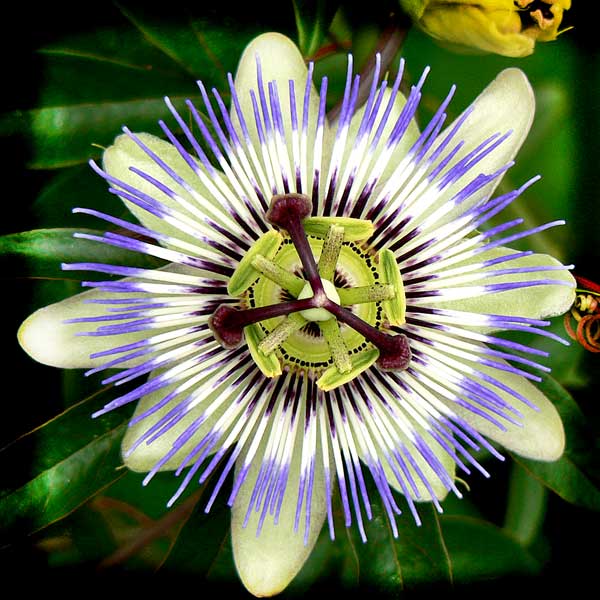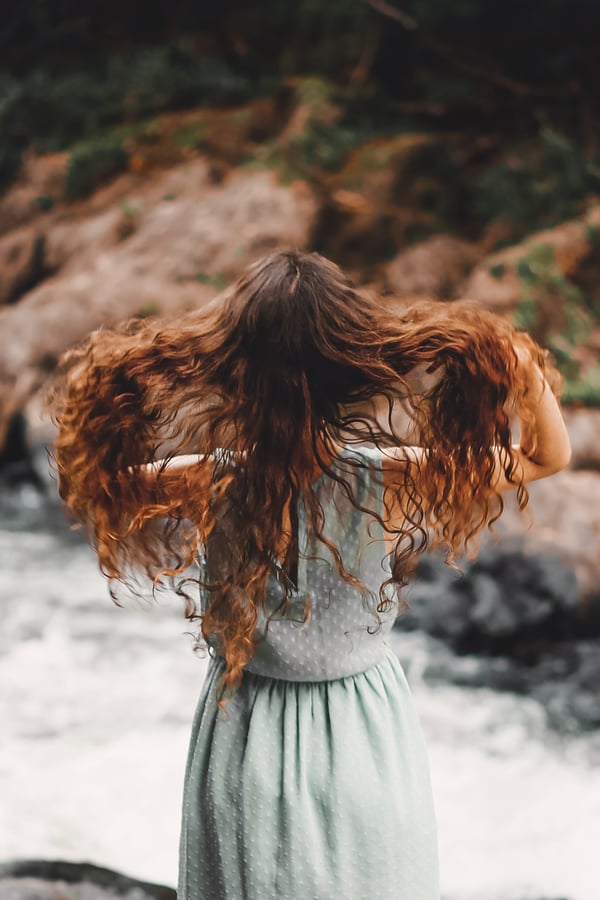
When I say “herbal hair,” what is the first thing that comes to mind? Confusion? An image of someone who rarely takes care of their locks? Or maybe even a slight understanding of the magick of apple cider vinegar as a rinse? To me, herbal hair is the alchemy between humans and the earth. The delicate dance between caretaker, gardener, and healer. Beauty rituals that comfort our souls and release our grip and dependence on man-made products. At the root of it all, herbal hair care can nourish our scalps and color our locks, simply by using flowers, leaves, roots, and seeds. This can be in the form of a hydrosol mist, a leave-in spray, or an infusion of jojoba oil and rosemary for scalp nutrients.
Plants have been used for thousands of years to color, soothe, nourish, cleanse, and style hair. From the ancient Egyptians to the Greeks & Romans, all the way to our modern world, herbs of varying types have been used. Indigenous Americans used walnut shells and alkanet roots to tend to their locks. The Celts loved using hawthorn and rowan berries. One of the more popular and well-known herbs for herbal hair is henna: a flowering bush whose leaves are harvested, dried, and powdered to create intense coppers and deep brunettes on the perfect head of hair.
With all these amazing possibilities and uses of plants for herbal hair care and color, there also comes a slew of ill advice and misinformation. Things like henna containing metallic salts or causing the hair to smoke or melt are incorrect. As an herbal hair stylist, I have done years of research and have worked with these herbs firsthand. None of these claims are true for pure, honest henna or other natural haircare and hair-coloring herbs. Understanding the herbs you are using and their sourcing is vital.
Before I began doing herbal hair, I remember being so upset and sad that the conventional tools I had been using for years and years behind the chair were making me really sick. The hardest part to navigate was alternatives for hair color, something so many people flock to salons for. The herbal hair care scene was evolving, and herbal hair color offerings were just being born. That pain point turned into one of my biggest life journeys to date. I will admit that, at first, I was skeptical but wildly curious. I discovered through deep research, hands-on experience, and, honestly, a lot of play and freedom that there is limitless duality and offerings within nature for our hair rituals.
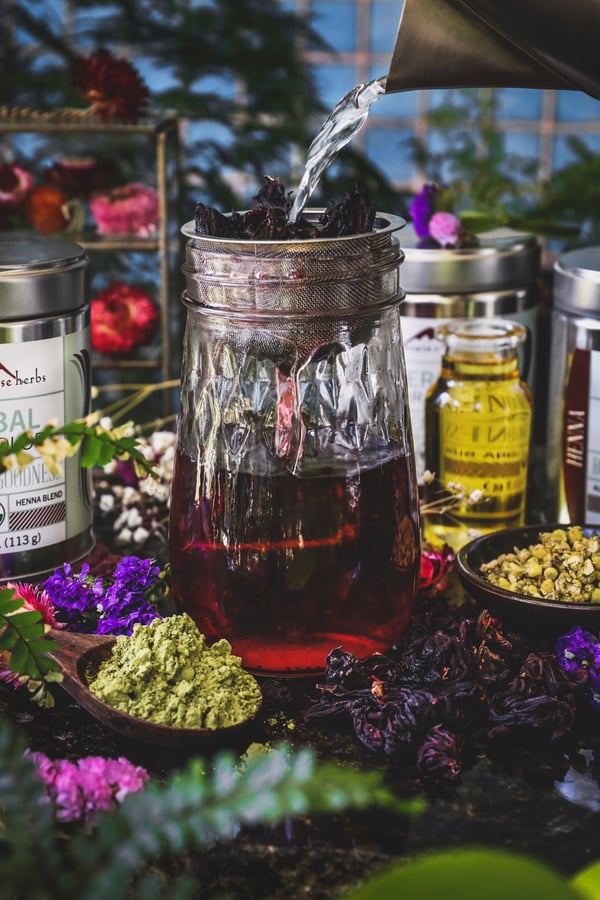
Over the years, I have played with the more known hair herbs like cassia, henna, and indigo as well as logwood, blueberries, rhubarb and madder, and so on. What I love about these herbs is their versatility and their healing potential. Cassia and henna are beautiful for soothing irritated and imbalanced scalps. They also happen to add golden or copper hues to the hair. Same idea for plants like chamomile or hibiscus; chamomile is beautiful at soothing and can add a bit of golden sheen. Hibiscus is amazing at fortifying our hair follicles to aid in healthy growth and can also add a temporary tint of soft pink to light hair. There is such a beautiful duality between nourishment for the hair AND tinting.
Herbal hair colors like henna or indigo do not alter the natural state of the hair cuticle, nor do they require a chemical developer or any byproducts of the petrochemical industry. Herbal hair colors are simply plants containing pigments that stain the outer hair cuticle. Not only are certain herbs, plants, leaves & roots able to dye hair, but they can also fortify weakened strands, add shine and softness, balance the scalp's pH, rebalance oiliness, rehydrate dryness, and so, so much more.
To create a natural hair dye for yourself, choose your herb(s) of choice. I always suggest cleansing your hair first and applying herbal colors on damp hair. For herbal colors that contain henna or cassia, add a splash of apple cider vinegar to adjust the ph for better dye release. If your hair and scalp are on the dryer side, mixing in some honey and jojoba oil will help. Test strands and a patch test on your skin are always advised. Just because you use a natural plant doesn’t mean you won’t react to it. And a test strand is also a great way to see how the herbs and colors you’ve chosen will show up on your hair. Another tip if you ever invest in a premixed color option is to always read the ingredients list. Purity is key, and always avoid anything that contains “black henna” or PPD because these are harmful and artificial additives. Lastly, have fun! Test out different blends, plants, and timing on color applications. And always keep a record of your experiments, whether using a pre-blended herbal color or making your own.
Looking to learn more about natural hair care from Chelsea?
Read More at Wildflower and the Rose!
You may also enjoy:
Natural Scalp Treatments & Recipes
DIY Hair Serum with Argan Oil
Homemade Dry Shampoo Powder Recipes